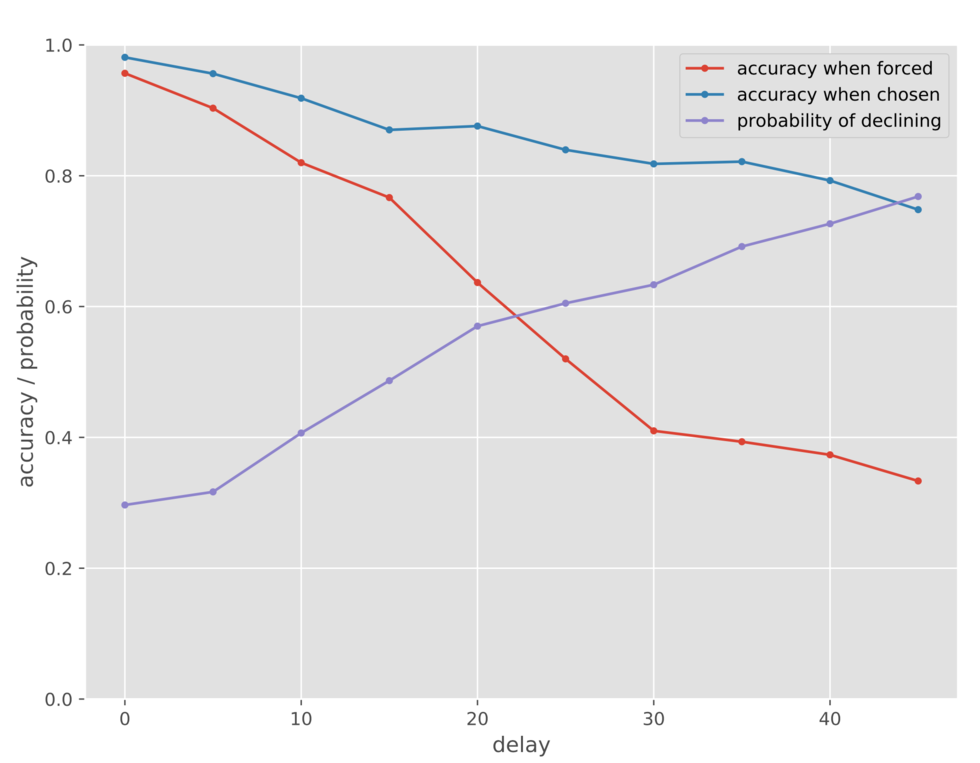
Informatics
June 3, 2022
Creating artificial intelligence that acts more human by knowing that it knows
A research group from the Graduate School of Informatics, Nagoya University, has taken a big step towards creating a neural network with metamemory through a computer-based evolution experiment.
In recent years, there has been rapid progress in designing artificial intelligence technology using neural networks that imitate brain circuits. One goal of this field of research is understanding the evolution of metamemory to use it to create artificial intelligence with a human-like mind.
Metamemory is the process by which we ask ourselves whether we remember what we had for dinner yesterday and then use that memory to decide whether to eat something different tonight. While this may seem like a simple question, answering it involves a complex process. Metamemory is important because it involves a person having knowledge of their own memory capabilities and adjusting their behavior accordingly.
“In order to elucidate the evolutionary basis of the human mind and consciousness, it is important to understand metamemory,” explains lead author Professor Takaya Arita. “A truly human-like artificial intelligence, which can be interacted with and enjoyed like a family member in a person’s home, is an artificial intelligence that has a certain amount of metamemory, as it has the ability to remember things that it once heard or learned.”
When studying metamemory, researchers often employ a ‘delayed matching-to-sample task’. In humans, this task consists of the participant seeing an object, such as a red circle, remembering it, and then taking part in a test to select the thing that they had previously seen from multiple similar objects. Correct answers are rewarded and wrong answers punished. However, the subject can choose not to do the test and still earn a smaller reward.
A human performing this task would naturally use their metamemory to consider if they remembered seeing the object. If they remembered it, they would take the test to get the bigger reward, and if they were unsure, they would avoid risking the penalty and receive the smaller reward instead. Previous studies reported that monkeys could perform this task as well.
The Nagoya University team comprising Professor Takaya Arita, Yusuke Yamato, and Reiji Suzuki of the Graduate School of Informatics created an artificial neural network model that performed the delayed matching-to-sample task and analyzed how it behaved.
Despite starting from random neural networks that did not even have a memory function, the model was able to evolve to the point that it performed similarly to the monkeys in previous studies. The neural network could examine its memories, keep them, and separate outputs. The intelligence was able to do this without requiring any assistance or intervention by the researchers, suggesting the plausibility of it having metamemory mechanisms. “The need for metamemory depends on the user's environment. Therefore, it is important for artificial intelligence to have a metamemory that adapts to its environment by learning and evolving,” says Professor Arita of the finding. “The key point is that the artificial intelligence learns and evolves to create a metamemory that adapts to its environment.”
Creating an adaptable intelligence with metamemory is a big step towards making machines that have memories like ours. The team is enthusiastic about the future, “This achievement is expected to provide clues to the realization of artificial intelligence with a ‘human-like mind’ and even consciousness.”
This graph shows the behavior of the evolved neural network for each delay time. Neural networks that are able to distinguish between the presence and absence of their own memory should improve accuracy in memory tests if allowed to decline tests when they do not recall if they saw the object before or not. The graph shows that this network has a higher accuracy in the condition where they were allowed to select than that in the condition where they were forced. We can also observe an increase in the avoidance rate with an increase in delay. This result is reasonable if we consider the network has a metamemory function, and a similar result was also observed in the behavior of a monkey in a previous experiment.
(Credit: Takaya Arita, Reiji Suzuki, and Yusuke Yamato)
The study, “Evolution of metamemory based on self-reference to own memory in artificial neural network with neuromodulation,” was published in the online edition of the international scientific journal Scientific Reports on April 26, 2022, at https://www.nature.com/articles/s41598-022-10173-4.
Authors:
Yusuke Yamato, Reiji Suzuki, and Takaya Arita at the Graduate School of Informatics, Nagoya University
The study was partly supported by a JSPS/MEXT Grants-in-Aid for Scientific Research (JP17H06383 in #4903).
Media Contact:
Matthew Coslett
International Communications Office, Nagoya University
Email: kouho-en@adm.nagoya-u.ac.jp